- The Sweet Potato Diet Review – Does This System Actually Work? - April 6, 2017
- GISHWHES – The Craziest Scavenger Hunt - August 9, 2016
- 18 Things To Pack For A Trip From a Full-Time Traveler. Don’t Miss Number 3 - August 2, 2016
I’m really excited to write this Sweet Potato Diet review, and not merely because it’s made a difference in my own health and wellness.
Yep, I said “difference”. Not, “amazing changes,” (gosh no) or, “I lost 100 pounds,” (definitely not) or even “I have to recommend it” (well, sorta).
It literally did make a difference in my life. A positive one.
[Here’s the book, if you want to check out what I’m talking about].
For the last two years, I’ve spent a lot of time on my body, figuring out how to get it to the healthiest, most loved state I can possibly create.
I started at 268 pounds, got down to 190-something, and then fluctuated quite a bit. Most of that came off using either using keto (very high fat), juicing (like it sounds), and with lots of Hight Intensity Interval Training (HIIT) for exercise. [Here’s a quick primer on what I did, intially, to kickstart my weight loss while traveling].
But, I hit a plateau. While I loved eating keto and felt better than I ever had prior, my body wasn’t anywhere near where I wanted it to be. What to do?
As I live most of my life in a state of, “Let’s see what magic appears,” I waited. Shortly after deciding to wait and see, I was offered a review copy of this book from NetGalley, and this Sweet Potato Diet review was borne.
Short version? I highly recommend The Sweet Potato Diet with some caveats – you’ll really only use this for the structure of the diet, not the recipes.
Long version? Let’s get to it.
The Basics of The Sweet Potato Diet
The book simply and concisely describes a carb cycling diet. For those unfamiliar with carb cycling, it’s a process to introduce more carbs on some days, and less on others, to trick your body into losing weight.
Think of it like this: thousands of years ago, humans did not know where their next meal would come from. Our bodies adapted to this kind of feast-or-famine routine to optimize our health.
There’s a lot of science and data about carb cycling, as there is keto. I’d yet to use a carb cycling program, but had read lots of research on it. A few authors and fitness trainers had also offered me their programs in the past, but they were too convoluted for me to put into place.
For me, that’s saying a lot. I routinely read scientific journals for fun and my work. I consider myself a nerd. I read voraciously. I use words like voraciously. Yet, if I feel a process too complex for daily use, I’m out.
The Sweet Potato Diet though was simple yet offered me more than enough information to show me it was worth trying. Add to the author’s personal experiences with the diet and I was sold.
Do I Have To Eat…?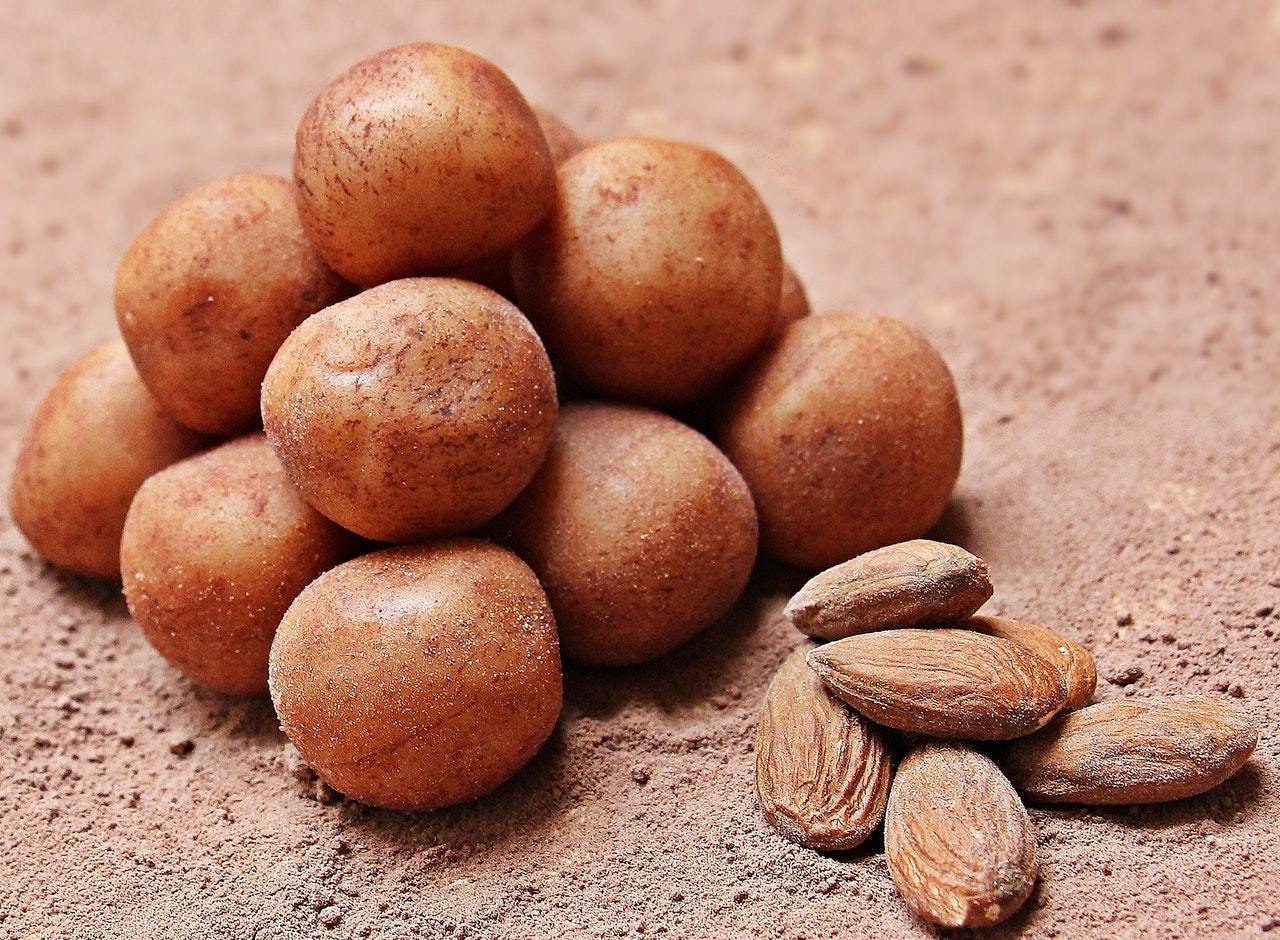
I was quite concerned about this diet, however.. I really didn’t want to eat the things that I knew already added inflammation in my body from all my other diet experiments.
In my case, that’s all grains, dairy, sugar and most fruits.
So, to put anyone else’s concerns to rest: you don’t have to eat any of those things. In fact, Michael Morrelli advises staying away from all of it. Phew!
The diet does have you eating some form of sweet potato at least four days a week, as well as healthy amounts of fat, vegetables and protein. You can choose the protein source, although meat is highly favored over vegetarian or vegan options.
Which isn’t to say you can’t use the Sweet Potato Diet and be vegan or vegetarian – I’m sure you could – it just might prove difficult.
On the days where I chose to eat vegetarian or vegan, my protein came from Vega Sport Performance Protein. Occasionally it came from eggs. I might have been able to figure it out with a high-fat nut (like macadamias) if I wanted to.
Day To Day Eating
I knew I’d have to share some of the processes of the diet without actually revealing the details that might stop someone from buying the book as I wrote this Sweet Potato Diet review.
But, how?
I fought with this one quite a bit, and decided in the end I’d share the basic structure. So, here goes.
The diet is based on a four-week cycle: three weeks following a specific daily allocation of carbs followed by seven days straight of the same daily carb allocation.
Each day of the first three weeks requires different macronutrients. To keep track (the most “challenging” part of the diet), I created a simple spreadsheet and printed it out so I knew what day was what. Easy peasy.
You’ll eat five times a day (no exceptions), the same macronutrients each time. Measuring consists of using a very simple process, specific to your own dietary needs. No new-fangled gadgets required.
Calorie-free drinks and seasonings are unlimited on the plan, plus a required amount of water per day. In my case, that was three liters. (As I’d already introduced this practice, it didn’t change anything for me).
Food Prep
I’ll be honest – there’s a fair amount of food prep with this diet. The author suggests hiring someone to do food prep for $15 an hour – an excellent idea.
After I’d finished with The Sweet Potato Diet, I started using Hello Fresh for this exact reason. Food prep and delivery to my door (and a $40 off coupon)?! Yep, I’m in love.
However, I digress. You can’t use Hello Fresh for The Sweet Potato Diet, although wouldn’t that rock? Anyway…
In my case, I don’t have room for a week’s worth of food in my fridge. I travel full time and more often than not share space with others.
So, I decided I would do my food prep once a day. This worked well for me.
I would start my day by cooking one large portion of a dish that fit my macros for the day and put the remaining meals in the fridge for later.
Since creating five servings of any one recipe is a bit challenging, my last meal was often just cut up vegetables and portable proteins and/or fats. Think beef jerky, hard boiled eggs, or leftovers from some of the baking in the higher carb days.
It took me, on average, 30 minutes every morning to make my meals for the day.
What About the Recipes?
Unfortunately, a lot of the recipes in the version of the book I was given access to (prior to publication) weren’t usable. I only discovered this as I went to make them, so it was a bit disappointing.
I did share this with the publishing company, and hopefully this was all fixed.
(Note: after publishing this Sweet Potato Diet review, I was contacted my several readers who told me the errors were still in the book. When I spoke with the author briefly, he shared the same. Sadly, a year later, I never received any updates, or edits from any source to actually make the recipies).
As well, I couldn’t find a lot of recipes that fit the macros I needed for most days. For instance, if I needed to eat one serving of protein, one of vegetables, none of fat and two of carbs? I couldn’t find a recipe that fit this criteria.
What if you’re on a really low carb day? Fuggetaboutit. There’s nothing. You’re on your own.
I realize this Sweet Potato Diet review is about the book and the recipes. So, uh… why would they include recipes that don’t include sweet potatoes?
Here’s my take on it: if you’re going to have me only eating sweet potatoes for carbs (I love it, yes I do), AND have me on days where I eat zero sweet potatoes… I want recipes for both.
Like I said, there just aren’t any in this book. Zero, nada, zilch. No recipes with zero carbs or zero sweet potatoes.
Luckily, my experience with eating keto had me well covered here. [Check out my keto pins on Pinterest for some of my favorite keto recipes].
If there’s any demand, I’ll happily write an article with all my favorite keto recipes that I used during this Sweet Potato Diet review process. [Hint: comment below and ask!]
What I Love About This Book
There’s a lot I loved about this book.
Firstly, it’s that I read it in one sitting. Which isn’t to say it’s a basic book. It’s not. It’s that I could get started right away with all the necessary information at my fingertips. Yes! Thank you.
Next up? The tone. I like to think of myself as an intelligent woman, yet I’ve read countless health and wellness books on similar subjects where I felt patronized, spoken down to, or like I was reading their “prove-it-to-the-world” manifesto that they’re King of the World.
No thanks.
I also hate it when I read a book whose author pummels me with the information they’re trying to get across. A few books I’ve read of late through NetGalley have fit this category of reading.
None of this applies, thankfully, to this book and my Sweet Potato Diet review. Yay!
If anything, I felt like this book was a dear friend talking to me about their weight loss experiment, sharing what worked and what didn’t, and then giving me concrete, usable information so I could match their results.
I Wish There Was More Of…
Perhaps not more of, but rather, a bit more fleshing out.
For instance, if I wanted to use my own recipes, I was out of luck. There’s no macronutrient profile given in the book to say, “this is how many carbs are in this,” or how it was determined with the recipe creation.
Now, I realize the measuring of macros in this program is more unusual than most programs, and it can’t really translate to the recipes (if I were to get technical).
I was willing to forgive this though, and use general macros. Still, it makes me wonder if I’d have better results if I were more precise with my measurements. Only time will tell… and I’ll add to this when I get those numbers.
What I’m trying to say is this: I wish there were some way for me to determine the protein, fat, and carb counts of my own recipes so I knew if I was within my macros.
As an example: if you sign up for the MorrelliFit newsletter, you’ll get one or four Sweet Potato Diet recipes. Awesome, right?
Well, if you’ve purchased the book already, not awesome. The newsletter is intended to get interested folks to buy the book, which I understand. But if you have already, oops.. there’s no listing of the carb, protein or fat macros for any of those recipes.
Now, I can kind of figure it out… there’s one amazing sweet potato hummus recipe that I’d categorize as one maybe a two carb portion, and possibly half a fat portion. Maybe. I really can’t tell.
I Wish There Was Less Of…
The only complaint I have of the book is that a few things get repeated throughout. I understood the macro measurements the first three times, but started to roll my eyes at around six or seven.
Biggest Drawbacks
Here’s what I struggled with the most, and it wasn’t anything to do with the book. It was in the implementation.
As I’ve shared already, I’ve eaten keto for almost two years, with a few small deviations for a week or two here and there. [See how I was able to lose 35 pounds while traveling, when this process started…]
Keto is a diet where you eat in excess of 70% of your diet from healthy fats. Again, I loved it, but it just points to my ability to adhere a way of eating that’s unforgiving.
When I ate keto, I was very rarely hungry. If anything, I forgot to eat most days and needed a reminder alert on my phone.
While working on this Sweet Potato Diet review, I struggled big time with my low and no carb days. I needed more fat and protein than the allotted amounts at least once a day. Which I found odd, considering I’ve eaten way fewer calories than what’s prescribed in the Sweet Potato Diet most of the last two years.
If anything, I’m eating almost double the calories. So, you’d think I’d be satiated? And yet…
I’m only a few days in, so I can’t really say for sure if this is just an adjustment, or, if it’s just not working for me. I’ll update with more results over the next month with concrete data as I move through this process.
[Update: Nope, it didn’t get better. Even worse? I started getting the shakes/sweats whenever I had my high carb days].
One More Thing?
Often in review or advance copies of diet books, there aren’t any before/after pictures or stories.
Having said that, usually there’s a marker within the book to show that’s where it’ll sit after publication.
Were there any in The Sweet Potato Diet book?
Nope.
I also searched online for these sorts of stories, hoping to see results.
Nuh-uh.
Normally I wouldn’t find this terribly odd, but, the book mentions the 200,000 people MorrelliFit has helped over the last few years… so….
Feel free to draw your own conclusions.
Did I Lose Any Weight With the Sweet Potato Diet?
A lot of folks will skip to this section, understandably..
My initial experience was some hunger on low and no carb days, and extreme bloating – although this might be from undercooking the cabbage curry I made.
After about a month, I had to stop the diet. The bloating on high carb days was so severe, I looked six months pregnant. It was painful.
I’d also, occasionally, get the shakes, as I mentioned already. I’m told this is normal when “re-feeding”… but it felt like my whole body was disintegrating, vibrating and overheating at the same time. Not fun.
The total loss was about 7.7 pounds in about two weeks. I say about, because I had to stop so suddenly, I didn’t get to weigh myself before I needed to stop.
** Medical Note: I have ulcerative colitis. I haven’t had a flare-up in many years, all managed by diet. I never thought for a second that I’d have any issues with this diet, and had my doctor’s okay to try it. The pain with eating as per the Sweet Potato Diet rules was so severe, it felt like my colitis was in full swing in mere hours. Eating keto again made the pain go away within a day.
The Bottom Line on This Sweet Potato Diet Review
I love this book. The tone, feel and information served me perfectly, and I was able to fill in the blanks I needed to.
Did I want more from the book as I wrote this Sweet Potato Diet review? Yes. Was it lacking a bit in details for someone experienced with very strict diets? Yes.
At the same time, this book gave me the clearest, most concise explanation of carb cycling that I’ve found. It helped me jump on board immediately – a huge plus.
Do I recommend the book? Like I said at the start – a definite yes with caveats. Make sure you ease into this process – the book explains very clearly how. And always, always, take those before/after pictures and measurements!
What About You?
Have you tried the Sweet Potato Diet? Did you have any success? Failure? What’s stopping you from buying the book, or, taking action? I’d love to hear all about it in the comments.
[one_third_first]
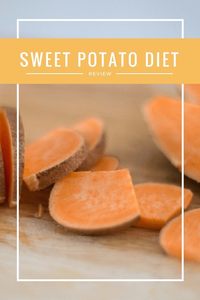
[/one_third_first][one_third]
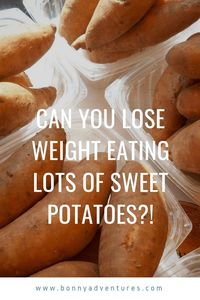
[/one_third][one_third_last]
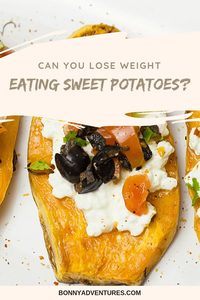
[/one_third_last]

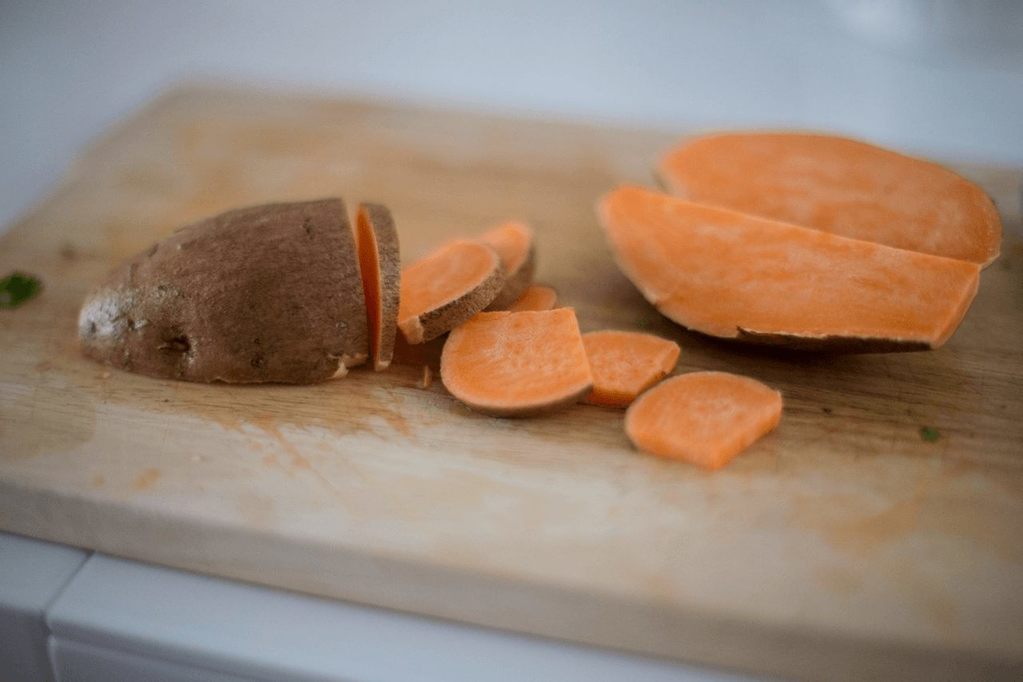
I’m just reading the book now and I’m wishing that it gave me some examples of menus. For example the first week when sweet potatoes are your only carb…does that mean no veggies and fruit? Also for a person who doesn’t eat eggs, most of the breakfast options have eggs. I’ve also noticed that the Cauliflower Sweet Potato Soup recipe doesn’t have any cauliflower – big whoops. I’m still chugging along with reading the book and I’m hoping to get more information as I read along or through internet searches.
Yikes! Really had hoped they’d fix the recipe errors prior to printing. I guess they didn’t.
There are a few errors in several recipes – the cauliflower one and the chocolate chip cookie one, for instance (no chocolate chips in the cookie one, but rather, dried fruit which I thought was weird). I’ve made notes to the publisher about all of this.
As for the fruit: none whatsoever on this diet.
As for the carbs: he doesn’t explain this well in the book, but the sweet potatoes are meant to only replace the carbs in your diet, ie breads, pasta, starchy veggies. So, none of that stuff any more. Just sweet potatoes (except for your cheat meal).
Veggies: they’re a part of every single meal, no matter what. Again, he contradicts himself a few times in the book. Nutshell: eat as many non-starchy veggies as you like. I find on the no or low carb days, I need much more of them, and I drench them in my fat of choice to feel full (look at keto recipes for ideas here, but what I usually do is make a coconut milk-based curry full of veggies).
There’s no menu options, you’re right. I hadn’t even thought of that. In my case, I’m just making food for the day and portioning it off – it’s just easier that way, I find.
Breakfast: I eat a LOT of eggs, so this didn’t bother me, but I can see how it might someone who can’t or won’t eat them. I’d just substitute another low fat, high quality protein of your choosing. If it were me and I hated eggs, I’d just a high quality protein powder and make smoothies. So, high carb days are easy – I have a sweet potato pie smoothie recipe that’s the bomb. Low or no carb days I’d make my version of butter tea with protein powder added in.
Hope it helps!
I think, after reading through my reply here to you Sharon, that I need to write an article with the recipes I’m using for this diet.
I had to do a LOT of searching too to get answers, so why not compile it all here. Thanks for the idea!
Sweet potatoes have changed dieting for me thanks to this book. For that I am grateful, but I am really trying to get over all the typos and mistakes in this book. I was hoping for a follow up and more support, but that doesn’t seem to be the case. The website has mistakes too. Thank you for your summary, I was able to glean more from this than from some parts of the book.